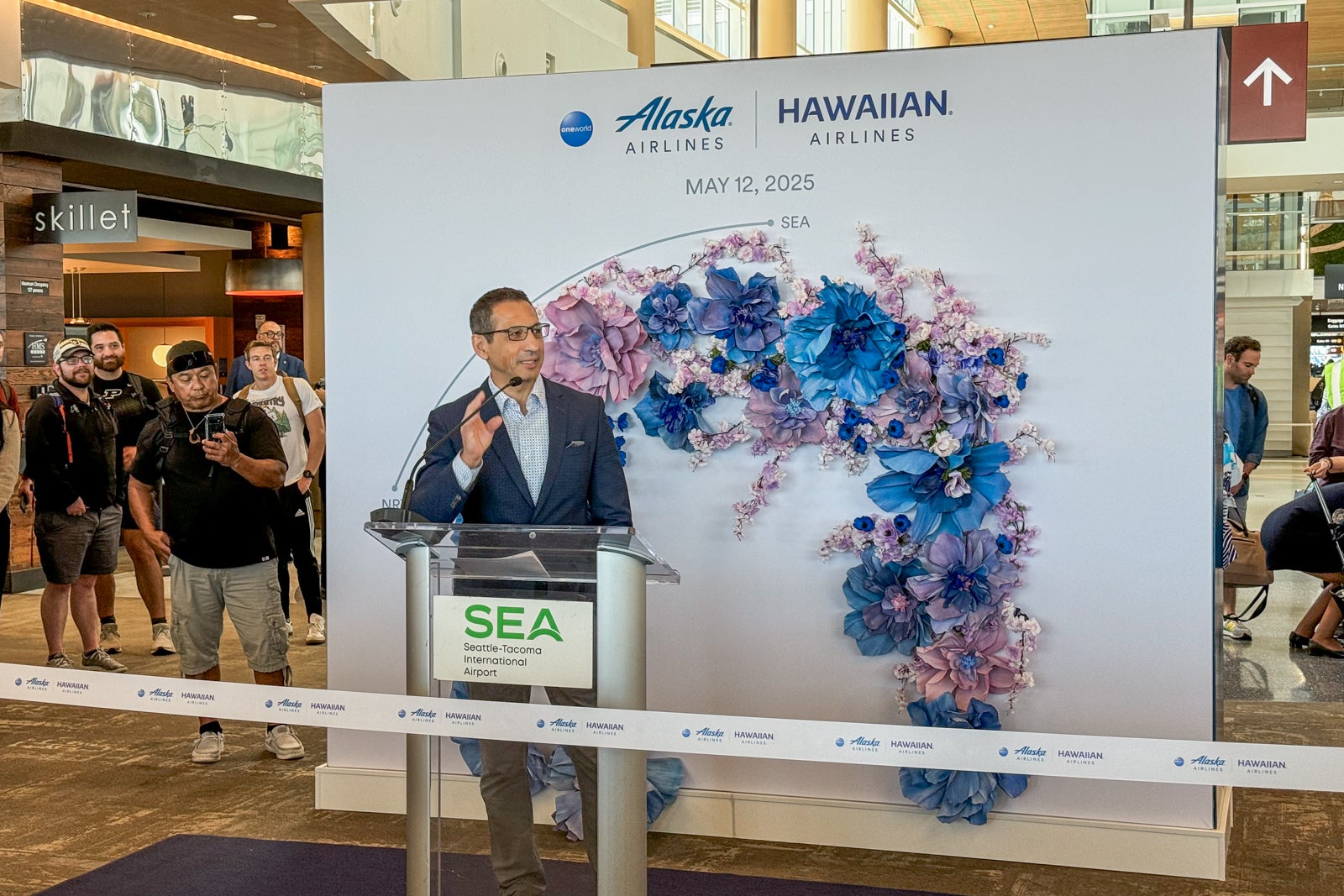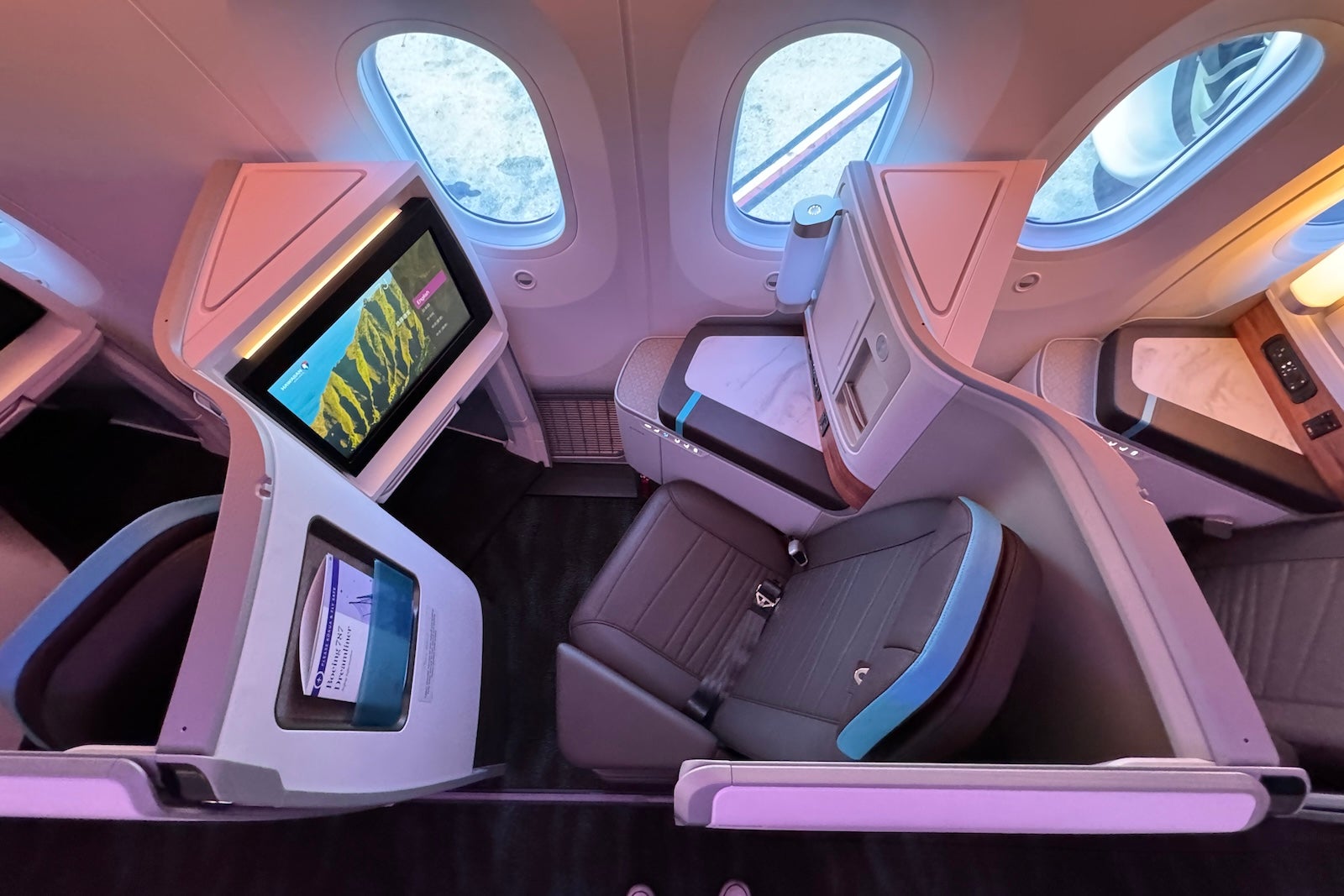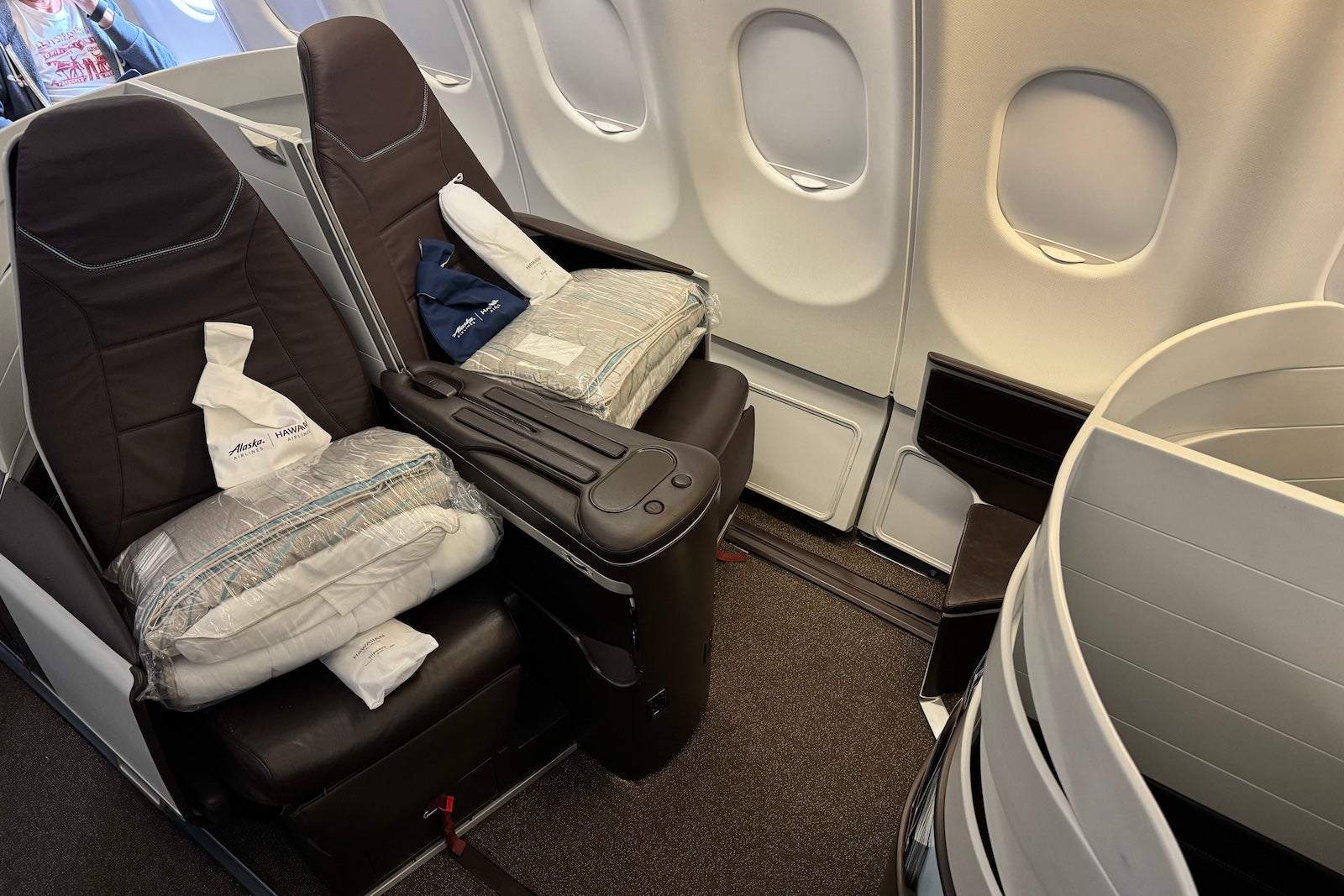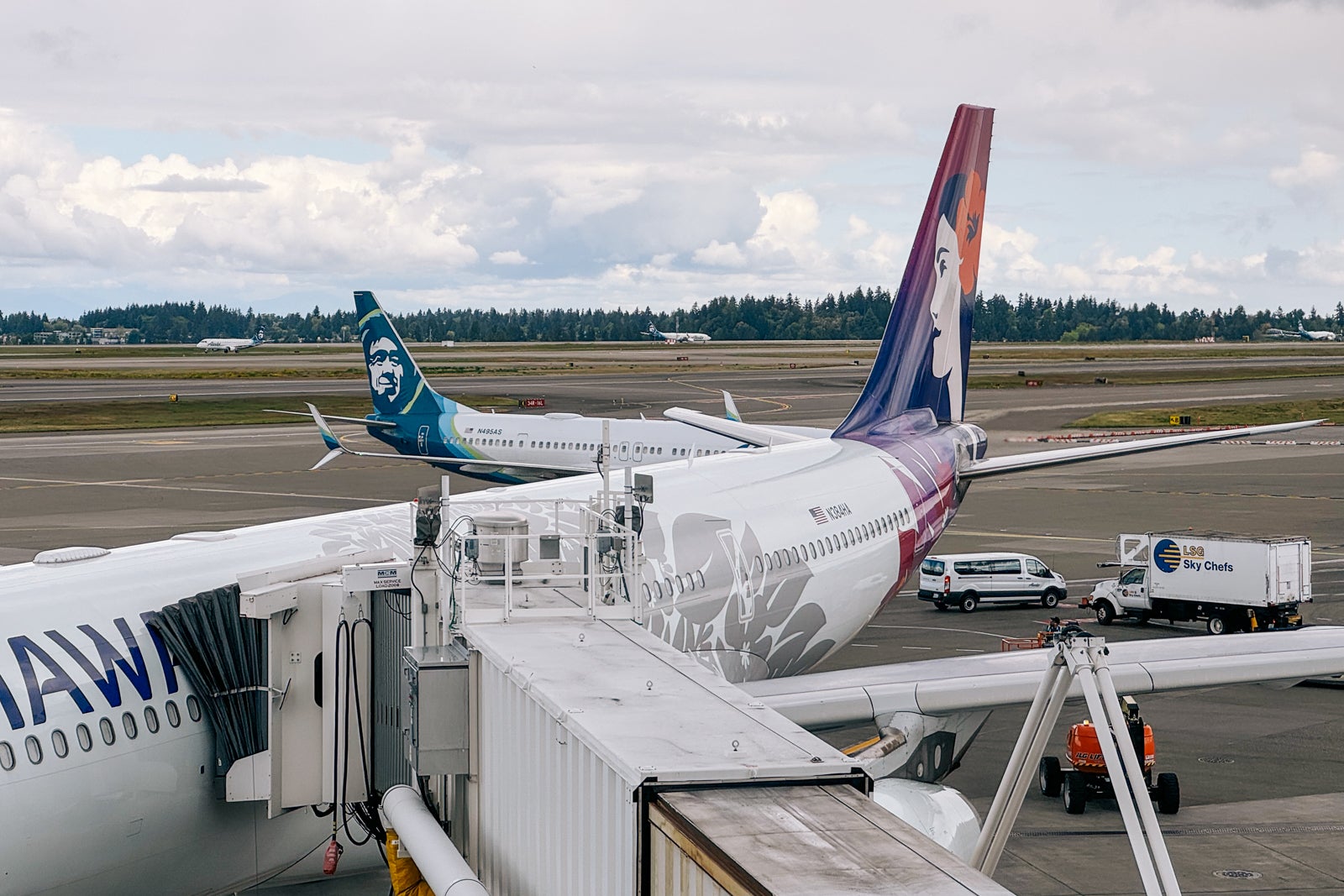The walrus pup was writhing slowly on the frozen ground of an Alaskan oil field, and it was clearly in distress.
Alaska
Walrus pup rescued in Alaska needs 24/7 human cuddling

Walrus pups in the wild rely on near-constant maternal care in their first two years of life, so the orphaned calf was clearly in trouble.
After consulting several wildlife agencies, ConocoPhillips airlifted the dehydrated walrus about 700 miles for treatment to the Alaska SeaLife Center’s Wildlife Response Program in Seward, said Carrie Goertz, a veterinarian who is director of animal health at the center.
“It’s unusual to get a walrus here — we’ve only had 10 of them [in 25 years],” Goertz said. “We don’t know how this particular baby became separated from his mother, but we knew that he wouldn’t survive without immediate intervention.”
“He’d apparently been out there for a while because he was in starvation mode,” Goertz added about the pup, which was found on July 31.
She and her staff quickly put together a plan to care for the walrus, which included antibiotics for a possible infection, treating him for dehydration and bottle-feeding him one liter of formula every three hours.
And there was one more critical element: The baby walrus would need to have someone available to cuddle with him, 24/7.
“Walruses are incredibly social,” Goertz explained. “Walruses love lying up against each other, so we want to emulate that closeness the best that we can.”
For more than a week, veterinary staff members have been taking turns sitting next to the whiskered marine mammal so he can snuggle up next to them if he wants to. He spends about 75 percent of his time sleeping.
“He basically cuddles us,” Goertz said. “We leave it up to him to decide, and he usually wants to. He’s also taking a bottle well, and that’s making his care a lot easier.”
Since Aug. 1, veterinary assistant Hanna Beane has been working eight-hour shifts bottle feeding and cuddling the calf she likes to call a “giant baked potato.”
“He’s really wrinkly and his skin is rough, and he seriously does remind me of a baked potato,” said Beane, 30. “I especially love his whiskers.”
Beane said the walrus usually rests his head and one flipper in her lap while he’s napping.
“Honestly, to have him lean up against you while he’s sleeping is magical,” she said.
She and other caregivers position themselves so the baby walrus can’t roll over on them and cause accidental injuries. Staff members say they’ll take additional safety measures as he grows.
Walruses can be dangerous in the wild, particularly if they are hunting or defending their young. Fully grown, a male Pacific walrus is up to 12 feet long and can weigh as much as 2 tons. They can live as long as 40 years.
They huddle together in large groups to keep each other warm when sleeping on land.
“Walruses are highly gregarious, social animals, so it’s just a natural thing for [the baby walrus] to want to do,” she said.
The calf will be cared for and monitored carefully for several months before he is healthy enough to send to a wildlife facility or zoo somewhere in the Lower 48, Goertz said.
“In the wild, he would spend up to two years with his mother, and she’d be teaching him to be the best walrus he can be,” she said. “But he doesn’t have that, so as he gets healthier, we’ll be working with people to determine the best placement for him.”
It’s a mystery how the calf ended up four miles inland, but Alaskan wildlife biologist Anthony Fischbach says there are a few possible scenarios.
“Typically, the female is always with her calf, so something could have happened to her,” he said. “Maybe there was a polar bear involved, or an orca — they prey on walruses.”
Another possibility is that the mother walrus was killed by Alaska Natives who are allowed to hunt walruses for sustenance, Fischbach said.
He said he has never heard of a calf moving so far inland from the coast.
“It’s really pretty rare,” he said, noting that the baby walrus might have swum in a river for a while before heading inland, possibly to search for its mother.
“This calf had to pull itself across low tundra — it’s extraordinary there was such a drive to go someplace,” Fischbach said. “Walruses really are very unusual in the animal world.”
Studies by the U.S. Geological Survey Alaska Science Center found there were about 166,000 walruses resting on one beach along the Chukchi Sea in 2018, he noted, while about 189,000 were observed in 2019.
The greatest threat to the walruses is the loss of Arctic sea ice, which forces the animals to spend more time on land every spring, according to the U.S. Geological Survey. Female walruses use the sea ice as a place to leave their calves while they forage, and as a platform to launch dives for clams and snails on the sea floor.
Beane said she has always admired the family-oriented creatures and feels honored to play a part in rehabilitating a young walrus in need.
“He’s got a long way to go before he’s a perky walrus again, but we hope to get him there,” she said.
“I’m proud to be at a center that’s equipped to take him in,” Beane added. “Without his mom, he wouldn’t have made it out there. This is the only chance he had.”

Alaska
Historians highlight Alaska’s historic properties during National Historic Preservation Month

ANCHORAGE, Alaska (KTUU) – May is National Historic Preservation Month, and historians across Alaska are asking for increased awareness of Alaska’s historic buildings.
According to Historic Preservation Architect Sam Combs, the art of historic preservation is important, not only for the significance of protecting local history, but it also draws tourists to the city.
“You come to a city not to see the new shiny skyscrapers and buildings, you come to see the history of the town,” Combs said.
One example Combs points to is the Oscar Anderson House near downtown Anchorage.
“This was reputedly the first frame house in Anchorage; there have been log cabins and other structures, but this was the first frame house,” Combs explained.
The property has been perfectly captured in time; there are period-appropriate items spread throughout the house for visitors to see, and the wallpaper has been renovated to be the original that was there when the house was first built.
“I took home layers of wallpaper and then put them in our bathtubs, separated them, and that’s how we determined which was the earliest wallpaper and freezes around the building,” Combs said, explaining the process he used to nail down the earliest wallpaper in the home.
There have been some upgrades to the home, but none that directly interfere with the effort to preserve the building in time.
“This floor was like a trampoline, it had, I think, 2×4’s spanning 17 feet, so it was a little bouncy, so we reinforced that,” Combs explained. “This fireplace was totally dismayed, demolished because it had been damaged in an earthquake earlier, and so I did restoration drawings from photographs.”
The biggest change to the property is the location itself.
“It was originally across the road here where those that apartment building is right now, and then it got moved because they wanted to build out there,” Combs said.
Because it is National Historic Preservation Month, Combs says there is an easy way for you to get involved in preserving Alaska’s great history.
“If you’ve got a historic house in town, let us know, we can help out. We do, you know, grant small amounts of grants to help with planning and to preserve the building or structure,” Combs said.
If you don’t have a historic property, then Combs suggested the next best way you can support historic preservation is by visiting historic properties around the state.
If you have a historic property, you can reach out to the Alaska Association for Historic Preservation through its website.
See a spelling or grammar error? Report it to web@ktuu.com
Copyright 2025 KTUU. All rights reserved.
Alaska
Alaska Airlines plans new long-haul experience, retrofits for Hawaiian's Airbus A330s – The Points Guy
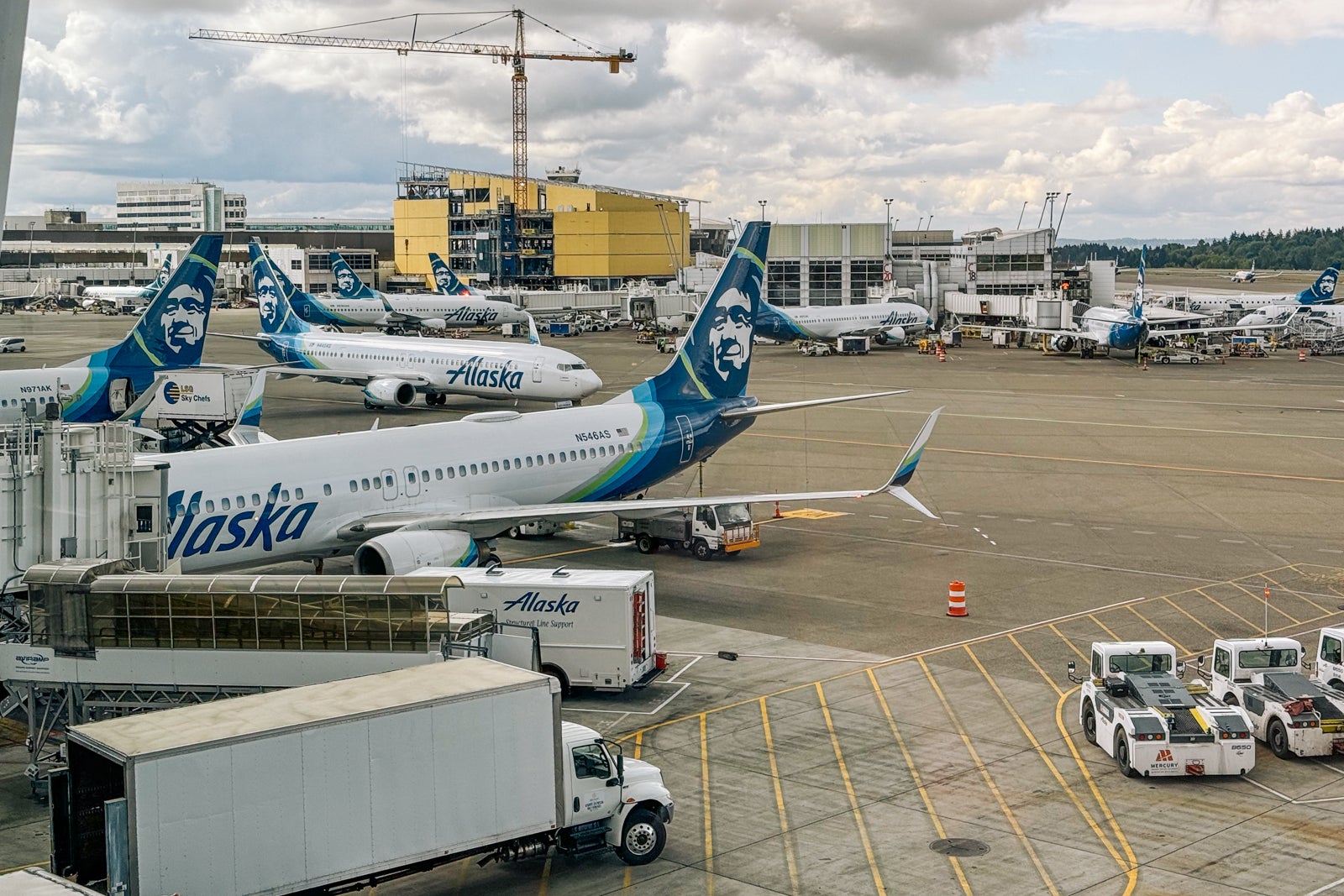
Fresh off its acquisition of Hawaiian Airlines last year, Alaska Airlines is gearing up to announce a “beautiful new international experience” — likely on board the Boeing 787 Dreamliners Hawaiian ordered before the two carriers merged.
The reveal is expected later this year, executives said Monday, moments before Alaska and Hawaiian jointly launched their first long-haul flight to Asia.
The new flagship international Dreamliner experience would presumably include an all-new business-class product and serve as the linchpin of the carrier’s future international growth plans out of its Seattle-Tacoma International Airport (SEA) home base — plans that include flights to Europe starting next year.
“What you’ll see is all the flights — international flights — out of Seattle, on 787s … and it’ll be operated by Alaska,” CEO Ben Minicucci told TPG in an interview Monday. “It’ll be a fantastic new international look.”
That’s noteworthy not just because of the prospects of a flashy new international cabin experience on a major U.S. airline, but also because it would be Alaska’s first true wide-body service. After all, it’s Hawaiian Airlines that’s operating the just-launched service from Seattle to Tokyo’s Narita International Airport (NRT), as Alaska and Hawaiian maintain separate brands under one corporate structure postmerger.
But gaining access to Hawaiian’s larger twin-aisle jets — and the Dreamliners it’s had on order for several years — was one of the factors that proved enticing for Alaska when it first sought to acquire the Aloha State’s home carrier starting in 2023.
Now, to be clear: It’ll be a little while before passengers see this new international Dreamliner product hit the skies. These planned 787 shifts are contingent on the completion of labor deals, Minicucci said, which could take a year or two.
Hawaiian had plans to receive a total of a dozen Dreamliners. It debuted its first 787 last spring, with a stunning new interior and serious upgrade over its legacy long-haul fleet.
A330 retrofits coming
Alaska Air Group is also planning an eventual face-lift for the older jets in Hawaiian’s fleet, Minicucci told TPG on Monday.

Daily Newsletter
Reward your inbox with the TPG Daily newsletter
Join over 700,000 readers for breaking news, in-depth guides and exclusive deals from TPG’s experts
The company sees Hawaiian’s Airbus A330s as a continued “niche” in its fleet on Honolulu routes for years to come. But, as I saw on board the Hawaiian-operated inaugural from Seattle to Tokyo, the cabins could use some tender loving care, aside from the free, high-speed Starlink Wi-Fi on board.
Indeed, retrofits for those jets are on Minicucci’s to-do list: “Those interiors,” he said, “will get a makeover in the next few years.” Snarled industry supply chains for seats could throw that timeline into jeopardy, though, he noted.
New loyalty program set for August debut
Alaska also revealed one additional bit of news about the future of its new, joint loyalty program that will encompass both Alaska and Hawaiian. That program will launch in August, Minicucci told TPG.
That figures to be a closely watched reveal, considering Mileage Plan currently offers some of the best sweet spot redemptions of any U.S. airline loyalty program.
“We’re not going to take anything away,” Minicucci told me — though he couldn’t get into specifics.
I did have to ask: Will the program be called Mileage Plan, or get some sort of new name, a la “Flying Blue” for Air France and KLM, or “Bonvoy” for Marriott’s portfolio of hotels? Minicucci only offered this: “It’ll be uniquely branded with a whole bunch of new features on it.”
A far more significant development worth watching: what immediate decision, if any, the company makes on its relationship with American Express. At the moment, Amex members can transfer Membership Rewards points to HawaiianMiles, and then shift those miles seamlessly over to Mileage Plan. Earlier this month, I used that tactic to redeem 4,500 Alaska miles for what would have been a pricey last-minute flight.
Alaska executives have previously expressed hesitancy about allowing flexible currency transfers from credit card programs as they dreamed up this new joint loyalty program.
Bilt Rewards Points do currently transfer directly to Alaska at a 1:1 ratio.
Related reading:
Alaska
Alaska will fly nonstop Sea-Tac to Europe in 2026, CEO Ben Minicucci says

Alaska Airlines’ next new nonstop route from Seattle will be to Europe in 2026, CEO Ben Minicucci confirmed this week in an interview where he laid out his vision for the next few years at Alaska.
Minicucci, a 20-year Alaska Air veteran who was named CEO in 2021, said the recent merger with Hawaiian Airlines is a “step change” for the airline, one that will allow it to expand its reach from the West Coast to other trans-Pacific hubs. Seattle will be at the center of that expansion, with plans to add 12 nonstop global routes with long-haul widebody airplanes by 2030.
Alaska has already announced two of those routes: one to Seoul, South Korea, starting in September and another to Tokyo Narita starting Monday. Hawaiian Airlines was already flying to those destinations, so Alaska was able to capitalize on the infrastructure and expertise it inherited through the $1.9 billion merger that closed in September.
The undisclosed European destination coming next could be a bigger lift. Neither Alaska nor Hawaiian has a presence there.
But Minicucci isn’t worried about the risks. For one thing, he said, Alaska knows what Seattle travelers want and believes the airline could stimulate demand with the new offering. For another, he encourages daring moves at the company, Minicucci said in a recent interview with The Seattle Times, striking a tone reminiscent of Big Tech CEOs out to disrupt industries.
“I want to give our people the ability not to be afraid. I want you to be bold, aggressive, try things. Because nobody ever does great things if you’re always safe,” Minicucci said. “Sometimes you have to put yourself out there and take a little bit of a chance, and feel a little bit that nervousness in your stomach and say ‘Wow, is this going to work?’ ”
Minicucci matches the demeanor of his edict to be fearless. Seated in a nook off the hallway on the upper floor of Alaska’s SeaTac headquarters, he was relaxed as he spoke about the airline’s future. Minicucci said hello to colleagues that walked by, giving off the air of a CEO who is often present in the office overlooking Sea-Tac Airport.
Originally from Montreal, Minicucci joined Alaska in 2004. He worked as vice president of maintenance, vice president of Seattle operations and president of Alaska Airlines, overseeing Alaska’s 2016 acquisition of Virgin America. He took over as CEO from Brad Tilden in 2021. On Thursday, Alaska shareholders approved a compensation package worth $8.6 million for Minicucci in 2024, a dip from the $10.3 million awarded a year earlier.
Nearly five years into his tenure as CEO and nine months into Alaska’s merger with Hawaiian Airlines, Minicucci said he’s moving with more conviction than before.
With the Virgin acquisition, Alaska went slowly, spent a lot of time analyzing decisions and often said “we’re not sure,” Minicucci said. This time, “We made a lot of the decisions out of the gate.”
Betting on new routes
The calculation that goes into picking a new route is a mix of science and art, said Kirsten Amrine, who is in charge of planning Alaska’s network of flights.
The science comes from numbers: Alaska can use industry data to see where and how frequently people are flying, and how much they are willing to pay.
The art is the reason Amrine and her team have jobs, Amrine joked in a recent interview. That side of the equation comes with knowing travelers and anticipating where Alaska’s customers may want to go.
As an example, Amrine pointed to Alaska’s decision to add a direct flight from Seattle to Belize in 2021.
The science didn’t necessarily support that decision, Amrine said. But Alaska’s network planning team knew Seattleites liked adventure and destinations that allowed them to get off the grid. Flights to Costa Rica performed well, so Alaska was willing to bet Belize would be the same.
Amrine considers that decision a success. The number of people flying from Seattle to Belize tripled.
Those types of route calculations are happening all the time. Amrine starts every Saturday morning looking at what changes Alaska’s competitors have made to their network.
Alaska makes weekly changes as well. Those decisions are finalized by Wednesday morning, Amrine said.
But the airline’s plans have a long tail. Alaska books out 331 days in advance, so the decisions made this Wednesday will affect flights in April 2026.
If Alaska is wrong on the science and the art of a destination, the biggest risk is “opportunity cost,” Amrine said. Every destination the airline picks means it can’t take a chance on a different destination, so “you want to think long-term,” Amrine said.
Minicucci holds a similar view. Unlike construction, which can be hard to reverse, airplanes are meant to move, he said.
He pointed to a recent attempt to start nonstop routes from Seattle to the Bahamas in 2023. Alaska ended that Nassau flight this year, determining that the market wasn’t there.
“It didn’t work,” Minicucci said. “We’re going to flip that and put that airplane somewhere else.”
Seattle is somewhat of a testing ground for Alaska, Minicucci said. When the airline expanded routes to Ronald Reagan National Airport in Washington, D.C., for example, it started offering flights from Seattle, then Portland, then San Francisco and Los Angeles, and now San Diego.
Alaska’s international expansion similarly is focused on Seattle now because “we know that’s going to work,” Minicucci said. “But in 10 years, in 20 years, as our airline continues to grow and do better, who knows where we’ll fly (out of) internationally?”
No longer “all Boeing”
The Hawaiian acquisition will put Alaska at odds with the tagline displayed on the nose of many of its planes: “Proudly all Boeing.”
As it integrates the two fleets, Alaska will inherit 24 widebody planes from Boeing’s European rival Airbus.
It’s not the first time Alaska has inherited Airbus planes — it added 60 Airbus aircraft when it acquired Virgin America in a 2016 deal. But it spent the next few years retiring those Airbus planes, hoping to capitalize on the efficiency of operating just one type of plane. That can make it easier and less expensive to train pilots and keep up with maintenance. Alaska was finally “proudly all Boeing” in September 2023.
This time around, Alaska will keep the Airbus planes, Minicucci said, and is relying on them to prop up its trans-Pacific expansion.
The Airbus A319 and A320 narrowbody planes Alaska inherited when it acquired Virgin were too similar to the Boeing 737 planes it was already flying, Minicucci said. Comparatively, the A330 widebodies Alaska inherited from Hawaiian will add new capabilities to Alaska’s fleet, allowing it to reach markets it couldn’t access with the 737.
Alaska also expects to receive 12 of Boeing’s widebody equivalent, the 787 Dreamliner, by 2028.
Alaska’s growing widebody fleet
As Alaska works to expand across the Pacific, it’s relying on a new fleet of widebody aircraft that will allow it to travel farther than the narrowbody planes it already operates.
“We have all the arrows in our quiver,” Minicucci said. “That gives us the possibility of reaching pretty much wherever we want to go out of Seattle.”
Because both Boeing and Airbus have such a large backlog of orders, it would have taken years for Alaska to receive the same Airbus widebody planes it is now gearing up to integrate into its fleet.
Moving away from “proudly all Boeing,” will add some complexities, Minicucci said, adding that he was confident his team could handle it smoothly. Pilots will go through additional training and simulations. Maintenance will require new facilities and tools. Even loading baggage on widebodies requires different equipment than that for the 737.
The Airbus A330s will be housed in Honolulu, using Hawaiian’s existing infrastructure. Alaska will build a new hangar to accommodate the Boeing 787 planes on the West Coast, though Minicucci couldn’t yet say where.
Finalizing the merger
Alaska laid out four milestones on its path to integrate the two airlines.
First, it will combine frequent flyer programs. Then, it must receive a single operating certificate from the Federal Aviation Administration, meaning the safety regulator has signed off that one set of management is in charge of both airlines and the combined carrier is operating safely.
Alaska plans to cross both those milestones by the end of the year.
After that, it will bring both airlines under one reservation system by mid-2026.
Lastly, it will combine the two unionized workforces and settle joint collective bargaining agreements. Those negotiations have already started and Alaska hopes to finalize agreements by 2027.
While Alaska is integrating Hawaiian into its operations, it wants to keep both brands distinct. So, even though customers will be able to use the same reservation system to book a flight on Alaska or Hawaiian, the onboard experience will be different. Flights to, from and within Hawaii will keep the Pualani logo on the plane’s tail.
Operating two distinct brands isn’t something airlines usually do after a merger and Minicucci said he faced some skepticism about the decision. But he’s “totally convicted” on doing so.
“That brand is just too special. It has a lot of equity and value, especially in the state of Hawaii,” he said. “I am convicted and resolute that brand is there forever.”
The concerns don’t faze him, Minicucci continued. “Just because it’s never been done, doesn’t mean it can’t be done.”
-

 Austin, TX4 days ago
Austin, TX4 days agoBest Austin Salads – 15 Food Places For Good Greens!
-

 Education1 week ago
Education1 week agoIn Alabama Commencement Speech, Trump Mixes In the Political
-

 Technology1 week ago
Technology1 week agoBe careful what you read about an Elden Ring movie
-

 Culture1 week ago
Culture1 week agoPulitzer Prizes 2025: A Guide to the Winning Books and Finalists
-

 World6 days ago
World6 days agoThe Take: Can India and Pakistan avoid a fourth war over Kashmir?
-

 Technology6 days ago
Technology6 days agoNetflix is removing Black Mirror: Bandersnatch
-

 Education1 week ago
Education1 week agoUniversity of Michigan President, Santa Ono, Set to Lead University of Florida
-

 News6 days ago
News6 days agoReincarnated by A.I., Arizona Man Forgives His Killer at Sentencing





